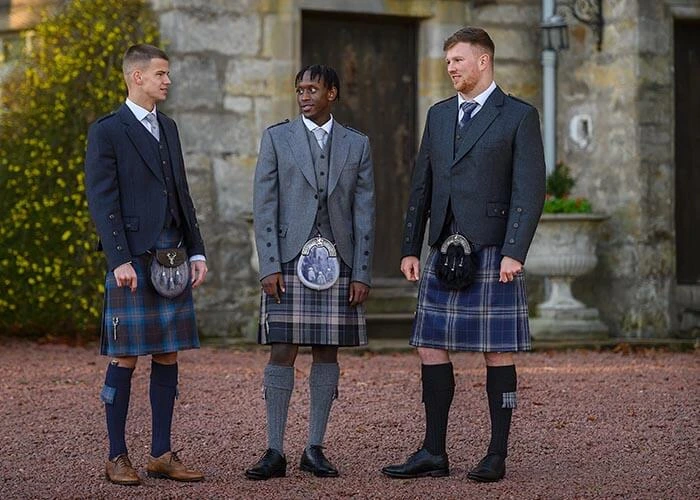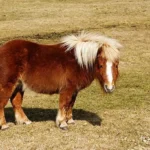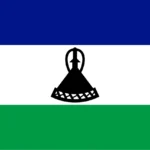
When you think of Scotland, images of rolling highlands, bagpipes, and the iconic kilt likely come to mind. This traditional garment, with its distinctive tartan patterns and rich cultural significance, has become a symbol of Scottish heritage recognized around the world. But there’s much more to the kilt than meets the eye! In this blog post, we’ll explore 25 fascinating facts about kilts that delve into their history, cultural importance, and modern-day adaptations. Whether you’re a kilt enthusiast, a history buff, or simply curious about this unique piece of clothing, you’re sure to discover something new and intriguing about this timeless attire. So, let’s unravel the layers of the kilt and celebrate its enduring legacy!
Origin and Design: The kilt is a distinctive garment that has become a symbol of Scottish heritage. It is characterized by its knee-length design and pleats at the back, providing both freedom of movement and a unique aesthetic. The kilt’s design allows for ease of wear, making it suitable for various activities, from dancing to outdoor events. Its historical roots can be traced back to the Highlands of Scotland, where it was adapted to the needs of the rugged landscape and the lifestyle of its inhabitants.
Material: Traditional kilts are primarily made from woolen cloth, known for its durability and warmth. The use of wool is significant not only for its practical benefits but also for its historical context, as wool was one of the most readily available materials in Scotland. The fabric is often woven into tartan patterns, which are not only visually striking but also carry deep cultural meanings, representing different clans and families throughout Scottish history.
Historical Development: The modern kilt, as we know it today, was developed in the 18th century. However, its origins can be traced back to the 16th century when early versions of the kilt were worn by Highland Scots. These early garments were more akin to a full-length cloak, known as the “Great Kilt,” which was wrapped around the body. Over time, the design evolved into the shorter, more practical version that is recognized today, reflecting changes in fashion and societal norms.
Etymology: The term “kilt” derives from the Old Norse word “kjalta,” which means “to tuck” or “to gather.” This etymology highlights the garment’s construction, as the fabric is gathered and tucked around the waist. The word reflects the practical nature of the kilt, which was designed to be functional for the wearer, allowing for ease of movement while maintaining a stylish appearance.
Tartan Patterns: The Royal Stewart tartan is one of the most recognized tartan patterns associated with kilts and is often linked to the Scottish royal family. Tartan patterns are a key aspect of kilt design, with each pattern representing specific clans, families, or organizations. The colors and designs of tartans can convey information about lineage and heritage, making them a significant cultural symbol in Scotland. There are over 7,000 registered tartans, each with its unique history and significance.
Sporran Accessory: Traditionally, kilts are worn with a sporran, a pouch that hangs from the waist, serving both practical and decorative purposes. The sporran is essential because kilts do not have pockets, and it allows the wearer to carry personal items. Sporrans come in various styles, from simple leather designs to ornate versions adorned with fur or decorative elements, reflecting the wearer’s personal taste and the formality of the occasion.
Gender and Modern Adoption: While kilts have historically been worn by men, women have increasingly adopted kilts as part of their attire in modern fashion. This shift reflects broader changes in societal norms regarding gender and clothing. Women’s kilts may feature different styles and lengths, and designers often create feminine interpretations of traditional kilts, expanding the garment’s appeal beyond its historical male associations.
Cultural Significance: The kilt is deeply associated with Scottish Highland dress and is often worn during significant cultural events such as weddings, ceilidhs, and other formal gatherings. Its cultural significance is underscored by its role in representing Scottish identity, traditions, and pride. Wearing a kilt can evoke a sense of belonging and connection to Scottish heritage, especially during celebrations of Scottish culture.
Tartan Registration: There are over 7,000 registered tartans in Scotland, each with distinct patterns that represent various clans, families, or organizations. This extensive variety allows individuals to select a tartan that reflects their heritage or personal preferences. The registration of tartans is managed by the Scottish Tartans Authority, which maintains a database of patterns and their associated histories, ensuring that the significance of each tartan is preserved.
Cost of Kilts: The average cost of a traditional kilt can range from $300 to over $1,000, depending on the fabric quality, craftsmanship, and customization options. High-quality woolen kilts, especially those made from authentic tartan, tend to be more expensive due to the labor-intensive weaving process and the significance of the materials used. Custom kilts, tailored to fit the wearer perfectly, can also increase the price, making them a worthwhile investment for those seeking a unique piece of clothing that carries cultural heritage.
Cost Range: The average cost of a traditional kilt can range from $300 to over $1,000, reflecting various factors such as fabric quality, craftsmanship, and customization. The price is influenced by the type of tartan used; authentic wool tartans are typically more expensive than synthetic alternatives. Additionally, custom-made kilts that are tailored to fit an individual’s measurements can increase the cost. This investment not only provides a unique garment but also connects the wearer to Scottish heritage and tradition.
Going Regimental: Traditionally, it is common for men to wear kilts without underwear, a practice colloquially known as “going regimental.” This practice is rooted in historical customs and is often embraced during formal events or celebrations where kilts are worn. While it is a personal choice and not a requirement, many view it as a way to honor tradition and embrace the full experience of wearing a kilt. However, modern wearers may choose to wear undergarments for comfort and personal preference.
Literary Mentions: The first known mention of the kilt in literature dates back to 1582, found in a letter from a Scottish nobleman. This early reference highlights the kilt’s presence in Scottish society and its acceptance as a part of traditional attire. Over the centuries, the kilt has been depicted in various literary works, further solidifying its status as a cultural icon. As literature evolved, so did the portrayal of the kilt, serving as a symbol of Scottish identity and pride in many narratives.
Cultural Symbol: The kilt is considered a powerful symbol of Scottish heritage and identity. It represents not only the history of the Scottish Highlands but also the resilience and spirit of the Scottish people. Wearing a kilt can evoke a sense of pride and connection to one’s ancestry, especially during cultural events like Highland games and festivals. The kilt’s association with clan tartans further enhances its significance, as it visually signifies allegiance to a particular lineage or family.
Military Popularity: In the 19th century, kilts became popular among the British military, particularly within Highland regiments. The kilt was adopted as part of the military uniform, symbolizing bravery and heritage. Highland soldiers wore kilts during battles and parades, showcasing their Scottish identity with pride. The military’s embrace of the kilt helped to popularize it beyond Scotland, influencing fashion and cultural perceptions of Scottish attire worldwide.
Great Kilt: The “Great Kilt,” also known as the “belted plaid,” was a larger version of the kilt that included a length of fabric draped over the shoulder. This garment was more versatile, allowing the wearer to use the excess fabric as a cloak or blanket for warmth. The Great Kilt was commonly worn in the Highlands and was practical for the rugged terrain. Over time, the design evolved into the modern kilt, which is shorter and more tailored, but the Great Kilt remains an important part of Scottish history.
Highland Games: The kilt is often worn during Highland games, which are traditional Scottish festivals celebrating athletic competitions, music, and dance. These games feature events such as caber tossing, tug-of-war, and hammer throw, where participants often don kilts to honor their heritage. The kilt’s presence at these events symbolizes Scottish culture and camaraderie, bringing together communities to celebrate their shared traditions and athletic prowess.
Material Variety: While traditional kilts are primarily made from wool, they are also available in various materials, including cotton and synthetic fibers, for casual wear. The choice of material impacts the kilt’s comfort, durability, and suitability for different occasions. For instance, cotton kilts may be preferred for warmer weather or casual outings, while wool kilts are favored for formal events due to their classic appearance and warmth. This variety allows individuals to select kilts that suit their lifestyle and personal preferences.
Mini Kilt: The term “mini kilt” refers to a shorter version of the traditional kilt, typically worn by women. This style has become popular in modern fashion, offering a contemporary twist on the classic design. Mini kilts maintain the characteristic pleats and tartan patterns but are cut to a shorter length, making them versatile for various casual and semi-formal occasions. The mini kilt allows for creative styling and can be paired with different tops and accessories, appealing to a broader audience.
Scottish National Dress: The kilt is a significant component of Scottish National Dress, recognized globally as a symbol of Scottish heritage and identity. Traditionally made from woolen cloth, the kilt is often characterized by its distinctive tartan patterns. These patterns vary widely, with each design often linked to a specific Scottish clan or family, making the kilt not just a garment but a representation of cultural lineage. Its prominence in Scottish culture has led to its adoption in various ceremonial occasions, reinforcing its status as a staple of national pride.
Formal Events: In Scotland, it is customary for men to wear kilts during formal events, particularly at weddings. The kilt is often paired with a sporran (a small pouch worn at the front), a dress shirt, and a jacket, creating an elegant and traditional ensemble. Weddings, in particular, are occasions where the kilt shines, as it allows the groom and groomsmen to showcase their heritage while adding a touch of elegance to the celebration. The act of wearing a kilt during such significant life events not only honors tradition but also fosters a sense of community and belonging among those who share similar cultural backgrounds.
Clan Colors: The phrase “wearing your clan’s colors” is deeply rooted in the tradition of kilts, as the tartan pattern represents specific Scottish clans. Each tartan has a unique design and color scheme that signifies the heritage of a particular clan, allowing individuals to display their family ties and pride. This connection to clan identity is particularly important during gatherings such as Highland Games or clan reunions, where members come together to celebrate their shared history. The practice of wearing tartans also extends beyond Scotland, as people worldwide embrace these patterns to express their appreciation for Scottish culture.
Cultural Adoption: The kilt has transcended its Scottish origins and has been adopted by various cultures worldwide, often worn as a fashion statement. Designers have incorporated kilt-inspired elements into contemporary fashion, leading to a fusion of traditional and modern styles. This global adoption highlights the kilt’s versatility and appeal, allowing it to be worn in diverse settings, from casual outings to high-fashion runways. As a result, the kilt has become a symbol of cultural appreciation, showcasing how traditional garments can adapt and thrive in modern fashion contexts.
Fashion Trends: The kilt has inspired various fashion trends and is frequently featured in modern clothing collections. Designers often experiment with different fabrics, lengths, and styles, showcasing the kilt’s adaptability to current fashion sensibilities. The resurgence of interest in vintage and retro styles has further propelled the kilt into the spotlight, as it offers a unique alternative to conventional trousers or skirts. Fashion influencers and celebrities have also contributed to this trend, wearing kilts in innovative ways that challenge traditional styling, thereby solidifying the kilt’s place in contemporary fashion.
Wearing Rules: There are specific rules regarding how to wear a kilt properly, including guidelines on folding and pleating it for the best appearance. Traditionally, a kilt is worn at the natural waist, with the pleats at the back and the flat front panel. The correct way to fold and pleat a kilt is essential for achieving the desired silhouette and ensuring comfort while wearing it. Accessories such as the sporran, kilt hose, and ghillie brogues (traditional shoes) also have specific placements and styles that contribute to the overall look. Understanding these rules enhances the wearing experience and pays homage to the garment’s rich heritage.
FAQs about Kilts
1. What is a kilt?
A kilt is a traditional Scottish garment worn by men. It’s essentially a knee-length garment made of woven wool cloth with a distinctive tartan pattern. The kilt is not simply a piece of fabric wrapped around the waist; it’s carefully pleated and fastened, creating a specific structure and drape. It’s a powerful symbol of Scottish identity and culture.
2. What is tartan?
Tartan is the distinctive patterned cloth used to make kilts. It’s characterized by its crisscrossed horizontal and vertical lines of different colors. Each specific pattern, known as a sett, is associated with a particular Scottish clan or family. Wearing a clan’s tartan is a powerful expression of allegiance and belonging. While many tartans are traditional, new tartans can be designed and registered.
3. What is the history of the kilt?
The exact origins of the kilt are debated, but it’s generally accepted that it evolved from the féileadh mór (great kilt), a large piece of cloth that served as both clothing and a blanket. This early form of the kilt was versatile, allowing wearers to adapt to the harsh Scottish climate. Over time, the kilt evolved into the more structured garment we know today. It played a significant role in Scottish history, even being banned for a period after the Jacobite uprisings as the English government tried to suppress Highland culture.
4. How is a kilt made?
Making a kilt is a skilled craft. It involves:
- Choosing the tartan: Selecting the correct tartan is crucial, as it identifies the wearer’s clan or affiliation.
- Measuring and cutting the cloth: A significant amount of wool cloth is required, typically around 8 yards. Precise measurements are essential for proper fit and drape.
- Pleating: This is the most complex part of kilt making. The cloth is carefully pleated to create the characteristic swing and movement of the kilt. The pleats are arranged according to specific rules and traditions.
- Stitching and finishing: The pleats are secured, and the kilt is finished with various fastenings, including buckles and straps.
5. How do you wear a kilt?
Wearing a kilt correctly is essential. It’s not just a matter of wrapping it around your waist. Key elements include:
- Placement: The kilt should sit at the natural waist, slightly above the hips.
- Pleating: The pleats should be evenly spaced and fall correctly.
- Fastenings: The kilt is secured with leather straps and buckles.
- Accessories: A kilt is often worn with other traditional accessories, including a sporran (a pouch worn at the front), a kilt pin, and sometimes hose (socks) and ghillie brogues (shoes).
6. What is a sporran?
A sporran is a pouch worn at the front of the kilt. It serves both a practical and decorative purpose. Since kilts don’t have pockets, the sporran provides a place to carry personal items. Sporrans come in various styles, from simple leather pouches to elaborate, ornate ones.
7. What is a kilt pin?
A kilt pin is a decorative brooch that is worn on the outer apron of the kilt. It’s typically placed on the lower corner of the apron and adds a touch of style to the garment.
8. What is the difference between a casual kilt and a formal kilt?
Kilts can be made for different occasions. Formal kilts are typically made of heavier wool and feature more elaborate detailing. Casual kilts may be made of lighter materials and have simpler designs.
9. What do you wear under a kilt?
This is a frequently asked question, and the traditional answer is… nothing. However, some people may choose to wear underwear for comfort or personal preference.
10. Can anyone wear a kilt?
While the kilt is strongly associated with Scottish culture, it’s not exclusively reserved for people of Scottish descent. Anyone can wear a kilt, but it’s important to do so respectfully and be aware of its cultural significance. If you’re unsure about the appropriateness of wearing a particular tartan, it’s always best to do some research or consult with someone knowledgeable about Scottish traditions.
11. How much does a kilt cost?
The cost of a kilt can vary significantly depending on the materials, the complexity of the design, and whether it’s custom-made or off-the-rack. A good quality, hand-made kilt can be quite expensive, reflecting the skill and craftsmanship involved.
12. Where can I buy a kilt?
You can buy kilts from specialist kilt makers, Highland outfitters, and online retailers. If you’re looking for a traditional, high-quality kilt, it’s best to seek out reputable kilt makers.
13. How do I care for a kilt?
Kilts are typically made of wool, so they require special care. Dry cleaning is usually recommended. Proper storage is also important to prevent damage.
14. What are some modern interpretations of the kilt?
The kilt has inspired many modern fashion designers. You can find kilts in various materials, lengths, and styles, from traditional wool to contemporary fabrics. These modern interpretations often incorporate elements of the traditional kilt while adding a contemporary twist.
15. Are kilts only worn in Scotland?
While the kilt is most strongly associated with Scotland, it’s also worn in other parts of the world, particularly in communities with Scottish heritage. It’s also sometimes worn as a fashion statement outside of Scotland. However, its cultural significance remains most strongly rooted in Scotland.









